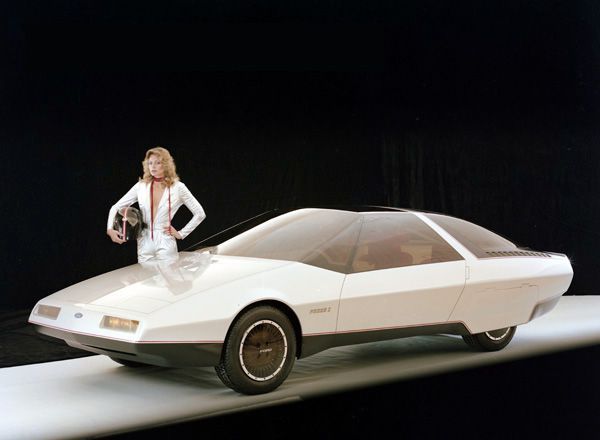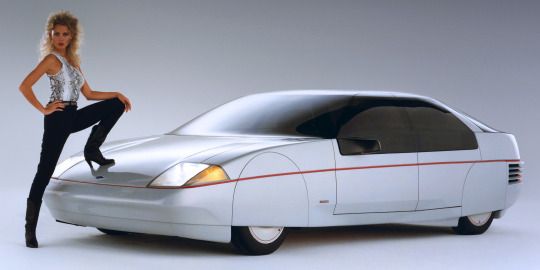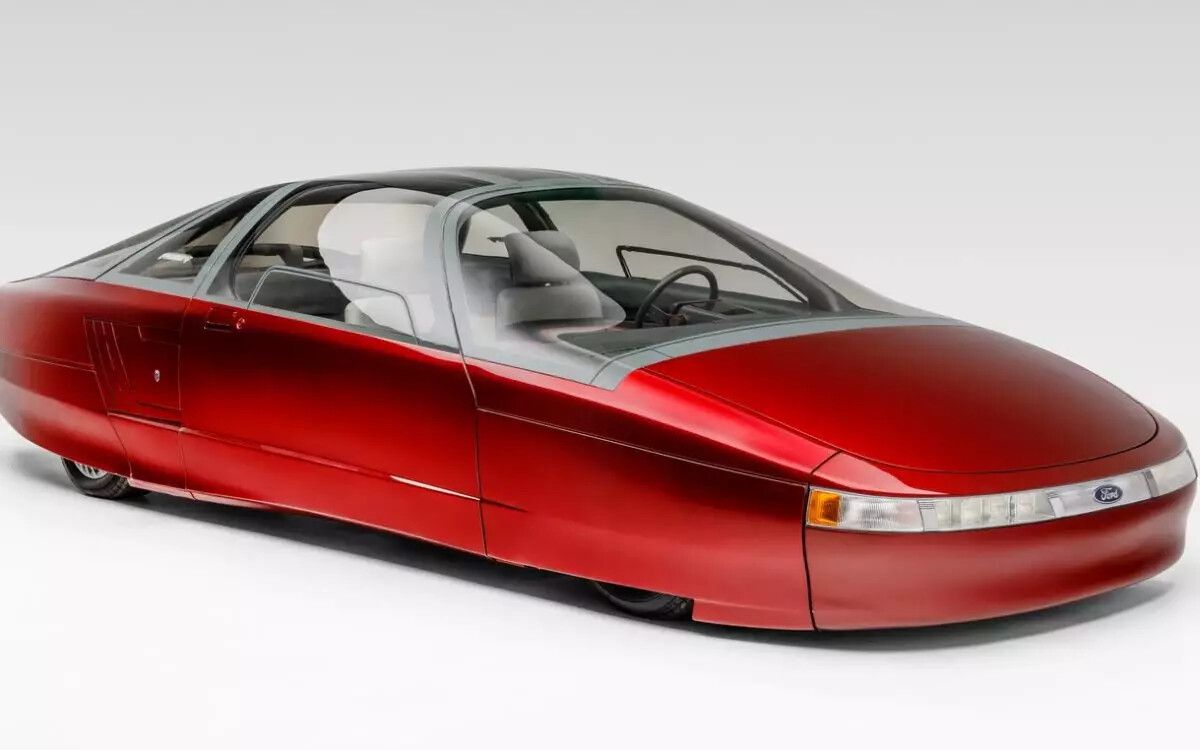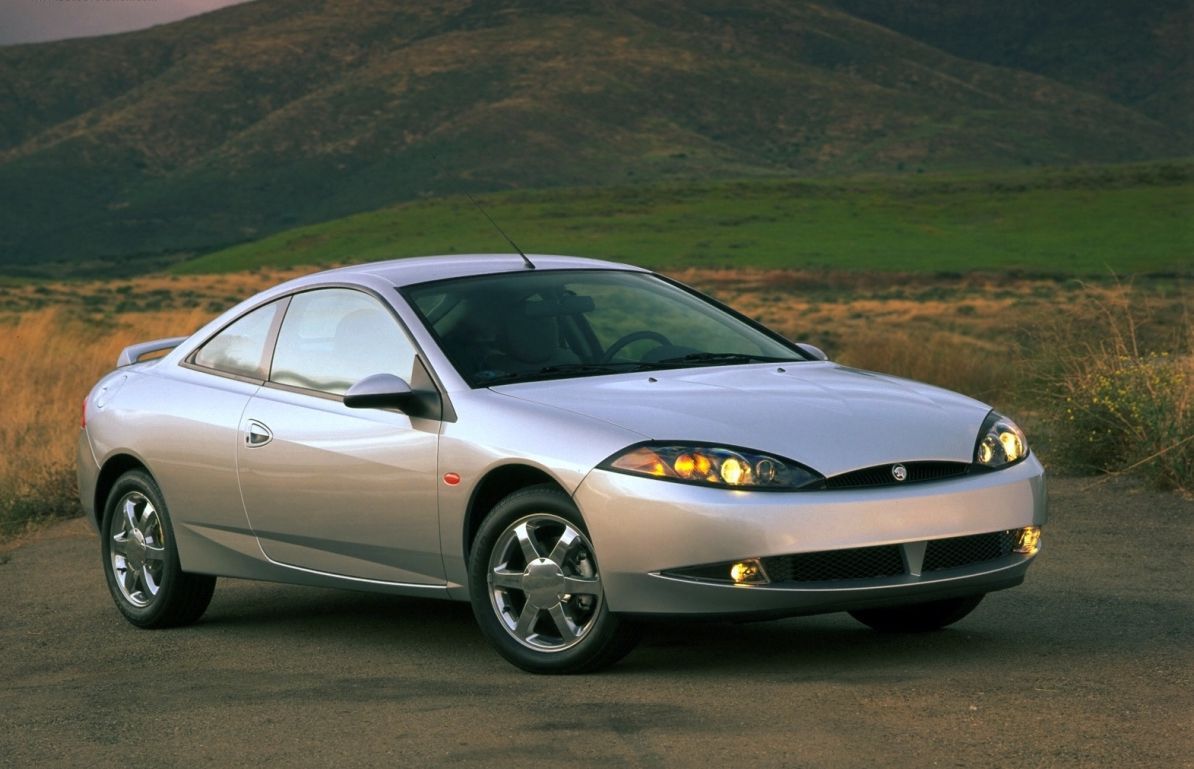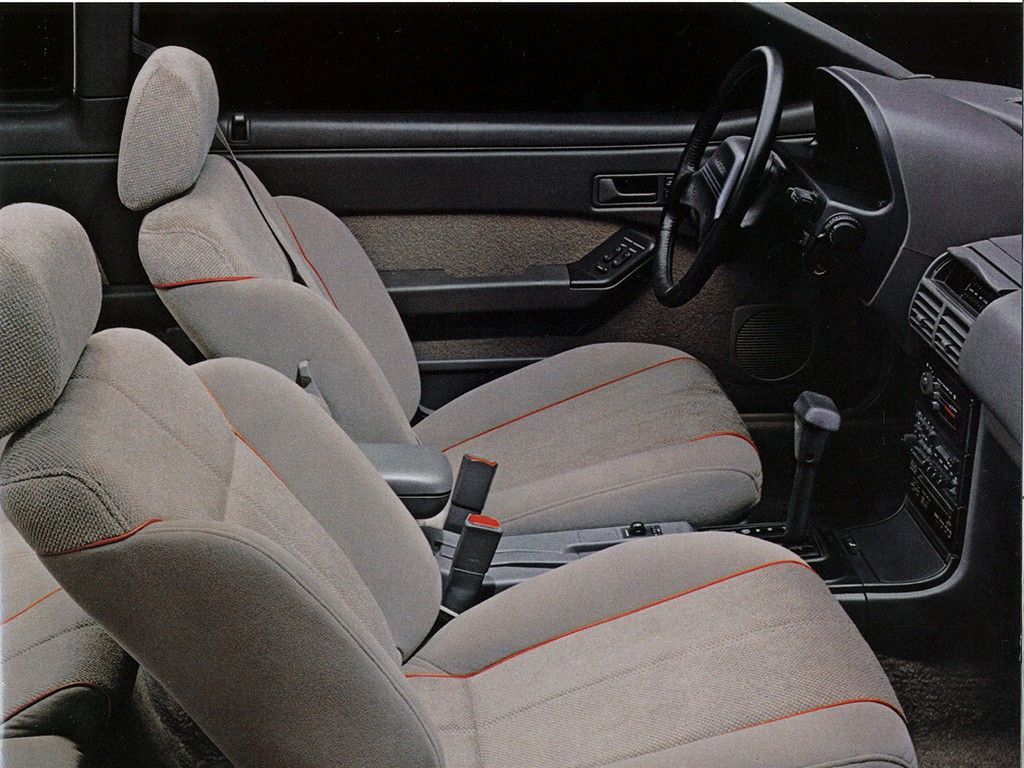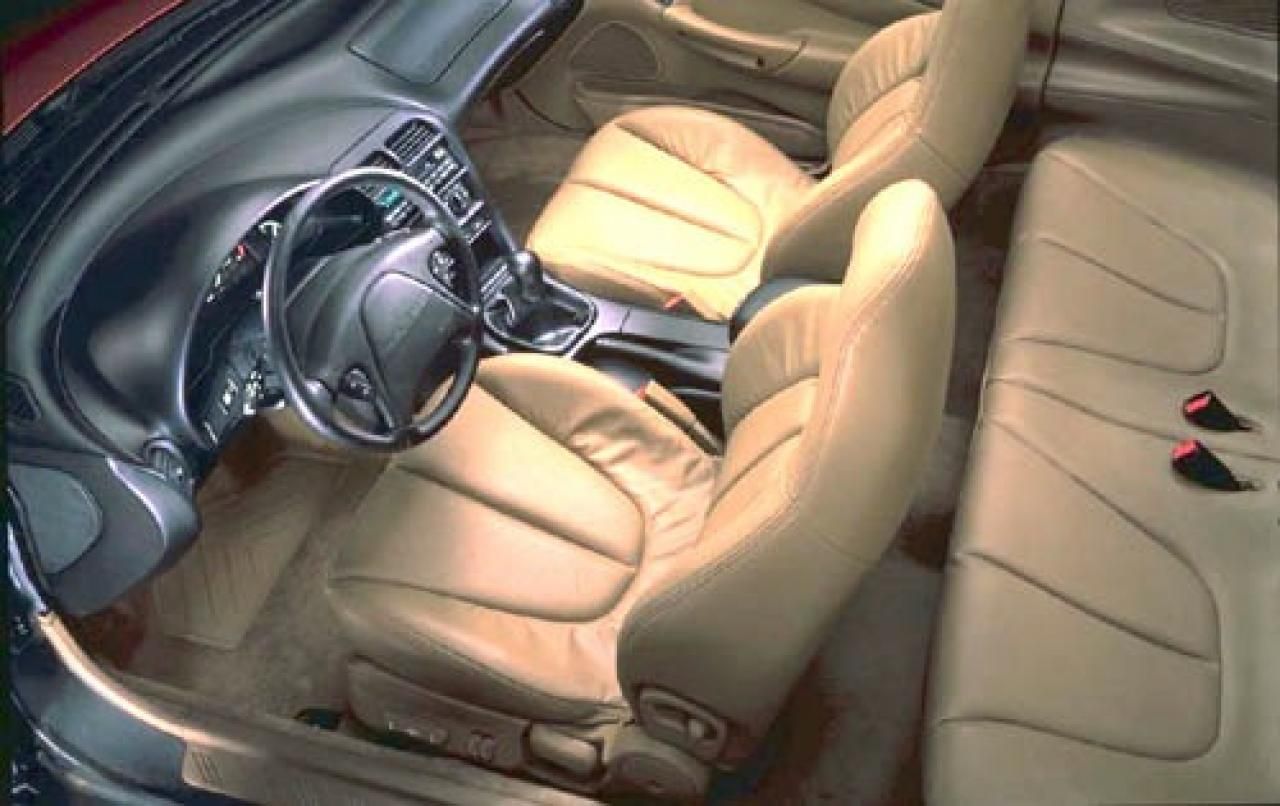The market for two-door sport coupes was hot in the 1980s, with the Acura Integra, Honda Prelude, Mitsubishi Eclipse, Nissan 200SX and Toyota Celica carving up the market. With the Fox platform on which the Ford Mustang was based from 1979 to 1983 at the end of its life, Ford planners determined that its best option was to transfer the Mustang name to a new sports coupe based heavily on the Mazda MX-6.
That was the plan, at least. Once the switcheroo leaked to the automotive press, thousands of car lovers sent letters of protest to Ford Motor Company. Internal advocates of a V8, rear-wheel-drive Mustang added their voices and subsequently received approval to build the Fourth Generation SN-95 Mustang.
History Of The Probe Name
Starting in the late 1970s, Ford and its captive design partner Ghia began exploring a series of futuristic designs with the "Probe" series of five different concept vehicles.
Ford Probe I was developed in 1979 to demonstrate that an aerodynamic sedan needn't look like a bubble or skimp on creature comforts. Based on a modified Fox Mustang chassis, the Probe I was powered by Ford's turbocharged 2.3L OHC four-cylinder engine. It featured a complete, operational interior. Ford claimed a Coefficient of Drag of 0.25 (about the same as today's Tesla Model S), which the company stated contributed to its projected 39 MPG.
There's little information about the 1980 Ford Probe II concept car. There's no record of it appearing in public, and only a few press photos were ever issued. Reports are that the Probe II was less about pushing the envelope of aerodynamics and more about serving as a testbed for new safety features.
Ford Probe III was unveiled in 1981 as a precursor to the upcoming European Sierra sedan. Styled and built in Europe, the Probe III concept returned the series to a focus on aerodynamics. Some aero tricks exploited on the Probe III include a small front grille opening, tightly contoured front wheel wells and covered rear wheel wells, a full underbody tray and flush-fitting headlamps and window glass. Ford claimed a Coefficient of Drag of 0.22 for the Probe III, surprisingly low for a near-production vehicle.
In 1983, designers worked to keep the Probe IV as low as possible - the engine was tilted over 70 degrees, the driver and passenger sat in semi-reclining seats, and designers moved the radiator and air conditioning to the rear. The Probe IV featured an active four-wheel suspension system that could lower the car by four inches in the front and raise the back of the car by six inches to present the most aerodynamic profile. Its Coefficient of Drag was 0.152.
To further improve the aero of the 1985 Ford Prove V, the entire drivetrain was positioned just in front of the rear wheels. This move allowed for a low nose and freedom to further smooth the car. Most interesting about the Probe V is its doors - all three (hatch included) were fixed to parallelogram hinges and swept backward. The Probe V achieved a Coefficient of Drag of just 0.137.
1st Generation Ford Probe: 1988-1992
The first production Ford Probe, the 1988-1992 model, was based on the Mazda GD platform, shared with the Mazda 626 and MX-6 and built at a factory in Flat Rock, Michigan, alongside those Mazda models. Standard power came from a 110 HP Mazda 2.2L SOHC 12-valve four-cylinder engine shared with the same Mazda models.
Very rare at the time for American cars was the Probe's four-wheel independent suspension which was under both generations of the Probe (the Mustang would have to wait until the next millennium to get independent rear suspension).
There were three trim levels available in the first-generation Probe. The base was the GL, which featured the standard engine and not much else. The LX added power locks and windows, electric outside mirrors and an available moon roof. In 1990, Ford expanded the engine choice with the addition of Ford's 140 HP, 3.0L SOHC V6 (developed for use in the Taurus). More features were added to the LX at the time, including a single-disc CD player.
The GT trim included all elements of the LX trim and added a turbocharged and intercooled version of Mazda's 2.2L four-cylinder base engine that produced 145 HP. Additional upgrades included four-wheel disc brakes with ABS and driver-adjustable three-way variable damping shocks.
The first-generation Ford Probe GT made it on Car and Driver magazine's 10 Best List for 1989.
2nd Generation Ford Probe: 1993-1997
For the second generation, the Ford Probe again shared its underpinnings with the Mazda MX-6. Mazda engineers developed the engine, transmission and chassis, while Ford created the exterior and interior designs.
The Ford design team was headed by Mimi Vandermolen, Ford's first female design executive. She said at the time that "If I can solve all the problems inherent in operating a vehicle for a woman, that'll make it that much easier for a man to use."
The base Probe came standard with the 2.0L Mazda 16-valve 4-cylinder engine, performance instrument cluster with tachometer and a complete set of gauges. The sportier GT model came standard with the 2.5L Mazda 24-valve V6, low profile P225/50VR16 tires, four-wheel disc brakes, five-spoke aluminum wheels, leather-wrapped steering wheel, and aggressively-bolstered bucket seats. Both engines featured dual overhead cam designs with a five-speed manual transmission or a four-speed automatic transmission.
Three appearances packages were offered across the Generation II model years. The SE, GT Plus (wild Orchid Edition) and GTS featured differentiated trims but had no improvements to the engine or chassis.
The second-generation Ford Probe was awarded Motor Trend's Car of the Year in 1993.
Probe Successor
Ford was going it alone in developing the third generation of Probe. Notably, Ford based the new Probe on the same platform as the successful European Ford Mondeo and Jaguar X-Type, with a strut front and multilink rear suspension. Ford canceled the Gen 3 Probe, and a Mercury Cougar badge was quickly added for the 1999 model year.
It was smaller than either generation of the Probe (and, to most eyes, better looking) and was positioned against other sport compact cars. The hot ticket was the Cougar S with a 198 HP V6, five-speed manual transmission, upgraded suspension, and quick-ratio rack and pinion steering. Other upgrades include SVT disc brakes and 17-inch alloy wheels.
Ford Probe As A Collector Car
Unfortunately, the market has not recognized either generation of Ford Probe as a collector car. Using the Kelley Blue Book site to generate a value, we punched in an LA zip code (for a rust-free example), low 30,000 miles and all the options for a 1997 Ford Probe GT in red and received a low, private party sale value of about $4,000. Given the rarity of low-mileage cream puff examples such as that, coming up with an accurate value is admittedly nearly impossible. Given that, we'd expect the price of a mint, 30k Probe GT to be considerably higher than $4,000. Even still, if you're inclined to invest in a Ford Probe, the stakes are not high.


